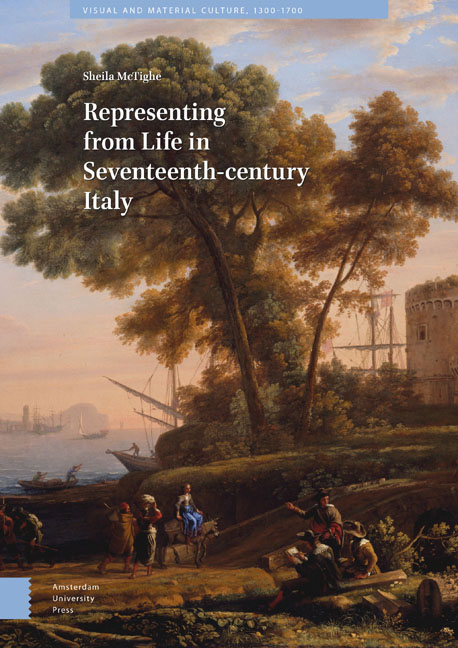Book contents
- Frontmatter
- Acknowledgements
- Contents
- Illustration List
- Introduction: Depicting from Life
- 1 Caravaggio’s Physiognomy
- 2 Jacques Callot, Drawing Dal Vivo around 1620: Commerce in Florence, Piracy on the High Seas
- 3 Jacques Callot’s Capricci di varie figure (1617): The Allusive Imagery of the Everyday, Represented ‘from Life’ and Emulating a Text
- 4 The Motif of the Shooting Man, and Capturing the Urban Scene: Claude Lorrain and the Bamboccianti
- 5 The Absent Eyewitness: the Revolt of Masaniello and Depiction Dal Vivo in the Middle of the Seventeenth Century
- Conclusion
- Index
Introduction: Depicting from Life
Published online by Cambridge University Press: 21 November 2020
- Frontmatter
- Acknowledgements
- Contents
- Illustration List
- Introduction: Depicting from Life
- 1 Caravaggio’s Physiognomy
- 2 Jacques Callot, Drawing Dal Vivo around 1620: Commerce in Florence, Piracy on the High Seas
- 3 Jacques Callot’s Capricci di varie figure (1617): The Allusive Imagery of the Everyday, Represented ‘from Life’ and Emulating a Text
- 4 The Motif of the Shooting Man, and Capturing the Urban Scene: Claude Lorrain and the Bamboccianti
- 5 The Absent Eyewitness: the Revolt of Masaniello and Depiction Dal Vivo in the Middle of the Seventeenth Century
- Conclusion
- Index
Summary
Abstract
What place does an eye-witnessing form of representation have in the development of European arts since the Renaissance? How can we make sense of images that clearly depart from actuality but nonetheless were labelled or described as ‘depicted from life’? The relationship between natural history illustrations and religious icons, portraiture and the reporting of news, inform our view of this distinctive practice of representing. Long associated solely with Dutch and Flemish art in this period, Italian practices of working dal naturale go beyond the infamous example of Caravaggio and help to put his art in a new perspective.
Keywords: indexical signs, Renaissance mimesis, imago contrafactum, ad vivum, Durer's rhinoceros
Is it ever really possible to depict something ‘from life’? When artists work in direct confrontation with their model in the workshop, or while immersed in the very landscape that they are depicting, their creative process differs from the depiction of imagined or remembered models. It yields a different result, as well, ending usually with a more detailed image. The painting or drawing made from life may, in the end, convey more of that elusive sense of presence we get from actual people and sites. But even while painting or drawing with the model before their eyes, the artist is never quite depicting ‘from life’. Every time their gaze turns away from the model and towards the paper or canvas, they leave behind the model's living presence to enter the realm of memory and imagination. They may reduce the distance between observation and memory, but the gap will persist, and it is in that gap that representation takes place. In that gap, as well, is born the personal style of an artist, their distinctive ‘handwriting’.
Even if representation in any period or any medium is always mediated through an individual's thought and memory, the urge to create images in direct contact with the model, and to make images that seem unmediated, was a distinct feature of early modern arts. It may now be more easily discerned as part of Northern art, inherent in Dutch and Flemish practices. Yet it had a particular surge in popularity across Europe at the end of the sixteenth century.
- Type
- Chapter
- Information
- Representing from Life in Seventeenth-century Italy , pp. 15 - 40Publisher: Amsterdam University PressPrint publication year: 2020



